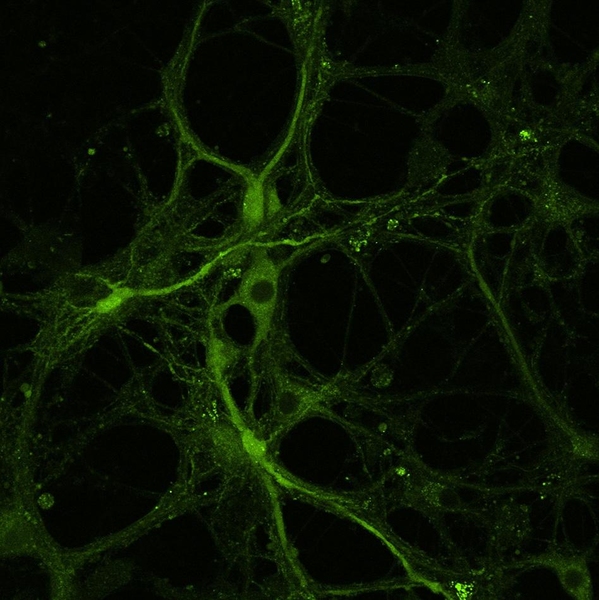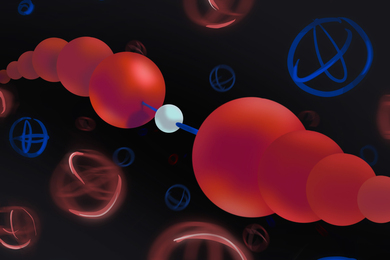Growing up in a family of artists and musicians, Colleen Loynachan had every intention of following suit to become a photojournalist. She was raised in a Los Angeles neighborhood she describes as “eclectic and dynamic” — a perfect backdrop for a curious teenager with a camera and an eye for arresting images.
It wasn’t until she applied for a research position at Children’s Hospital Los Angeles through her high school’s science research program that Loynachan considered a science-centric path. The summer before her senior year of high school, she worked as a researcher in the lab of the hospital’s surgical chief, Henri Ford. She joined a team investigating biomarkers for necrotizing enterocolitis, a potentially deadly inflammatory disease that can eat away at the intestines of premature infants. The project held special interest for Loynachan, who had suffered from gastrointestinal issues as a child.
Throughout that summer, she learned standard laboratory techniques, such as preparing cell cultures and performing gel electrophoresis. She also presented her findings, along with other researchers, at weekly lab meetings.
“It was the first time I was contributing to science in a meaningful way,” Loynachan says. “Through my research, I felt I could make a positive impact on the quality of life for others.”

That experience prompted her to consider a career in the sciences — although art, Loynachan says, is still never far from her mind. Today, as an MIT senior, she is working in the lab of Polina Anikeeva, the AMAX Career Development Assistant Professor in Materials Engineering, using magnetic nanoparticles to noninvasively manipulate amyloid beta protein aggregates associated with Alzheimer’s disease. Much of her time in the lab is spent using an electron microscope to examine the effects of her nanoparticle treatment.
“I observe protein fibers entangled into a large plaque decorated with nanoparticles that I have selectively targeted to the protein,” Loynachan says. “It’s really incredible to witness the experiments develop into a beautiful portrait. The patterns that I observe in my photography strongly recall the scientific images I’m creating.”
Loynachan is one of four MIT seniors who have been awarded Marshall Scholarships to study in the United Kingdom after graduation. She will head to Imperial College London, where she hopes to pursue two master’s degrees, one in biomedical engineering with biomaterials, and the other in biomedical research. She also plans to keep up with her photography, taking her camera along to explore the English landscape.
‘Beautiful ambiguity’
Vivid imagery was never in short supply at Loynachan’s home. Her father, a percussionist and mixed media artist, filled the family’s backyard with sculptures and totem poles, which she used as fodder for her photography. Loynachan’s mother, an amateur photographer and art instructor, ignited her passion for photography; she was soon hooked.
In 2009, one of Loynachan’s photographs was singled out for a Spotlight Award — an honor given to talented young artists in Southern California. The image, titled “Caged,” was of a red birdcage sitting on cracked pavement layered with splattered paint. “There’s a beautiful ambiguity to the portrait that I liked,” Loynachan says.
She juggled a variety of side jobs throughout her junior and senior years of high school, including working in live music venues. Three to four nights a week, Loynachan worked as an usher at one of two concert venues: the Hollywood Palladium and the Wiltern Theatre, where she helped manage event logistics for entertainers ranging from Katy Perry to Bob Dylan and Motley Crüe in a creative, sometimes chaotic environment.
“I loved the strobing lights and pulsating energy of the live performances,” Loynachan recalls. “I’m sometimes reminded of this imagery on a microscale when I’m performing fluorescence imaging in a darkroom to observe the activation of neurons.”
An intro to materials science
After graduating from high school, Loynachan headed to MIT, drawn by the Institute’s spirit of collaboration and enterprise. She was unsure what field to pursue until she took an introductory course in solid-state chemistry, where she first heard of materials science. After learning of the discipline’s diverse applications, from energy to medicine, Loynachan chose to focus her studies on materials science and engineering.
Soon after, she joined Anikeeva’s then-fledgling lab, helping to build up the group and develop research projects. One of Loynachan’s first projects used nanoparticles to stimulate neurons associated with neurological disorders. The project came with a good deal of responsibility; she was given the opportunity to plan out and troubleshoot experiments independently, but with the support of her group. Undaunted, she found that she welcomed the challenges, discoveries, and unknowns of laboratory work.
“Having a creative perspective has enabled me to tackle these interdisciplinary materials science problems,” Loynachan says.
During the summer after her sophomore year, she worked as a research fellow at the California Institute of Technology with Julia Greer, a professor of materials science and mechanics. The group was investigating the properties of materials at the nanoscale, and Loynachan helped to fabricate 60-nanometer-wide platinum pillars — a scale that had not previously been achieved. The researchers then subjected the pillars to various forces and found that, contrary to conventional theory, the nanopillars were 40 percent weaker than bulk materials. The results, which will help to guide the development of micro- and nanoscale devices, were published in the journal Nano Letters — Loynachan’s first authored publication.
Creating connections
Loynachan spent the spring semester of her junior year in the U.K., where she worked as a biomaterials researcher at Oxford University, helping to develop self-inflating hydrogels that stimulate skin growth for reconstructive surgeries. While there, Loynachan visited Imperial College London, where graduate students were presenting their research at a science festival. Much of their research, she noted, depended on collaboration among departments — a multidisciplinary approach that appealed to Loynachan.
She also learned that many students there are involved in outreach programs that focus on empowering elementary school students through science and math education — something in which Loynachan hopes to take part next year. She’s already had some experience as an advocate for science: At MIT, she is president of the Society of Undergraduate Materials Scientists, which organizes events and develops experiments to give incoming students a taste for the field. She also arranges informal dinners with faculty members to give students an opportunity to get to know professors outside of the classroom, and is a teaching assistant for an introductory materials science laboratory class for sophomores.
“Scientific progress doesn’t occur in a vacuum, and you’re continually collaborating with so many people,” Loynachan says. “Creating those connections is really important.”
Through her research at MIT and elsewhere, Loynachan has maintained connections with many researchers and mentors who have helped her arrive at where she is today. These connections may even develop into professional collaborations as Loynachan expands her research goals. Currently, she is manipulating nanoparticles that could be used to treat neurological disorders. In the future, she hopes to apply similar techniques to the study of cancer metastasis.
“Nanotechnology is revolutionizing medicine from the way we diagnose disease to the way we treat it,” Loynachan says. “I really want to be involved at the forefront of designing biomaterials, collaborating with medical research facilities to translate novel therapeutic devices into a clinical setting.”










